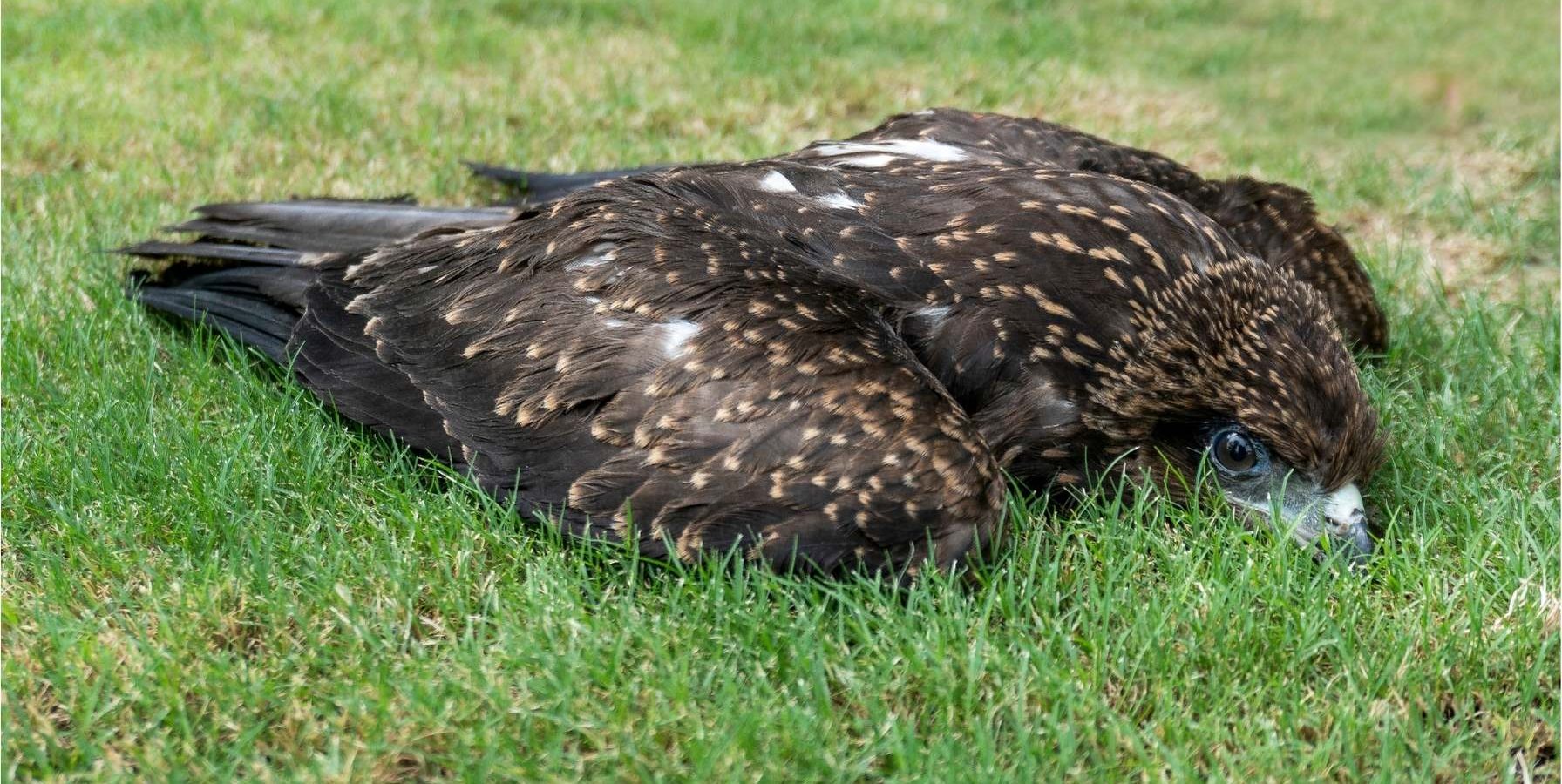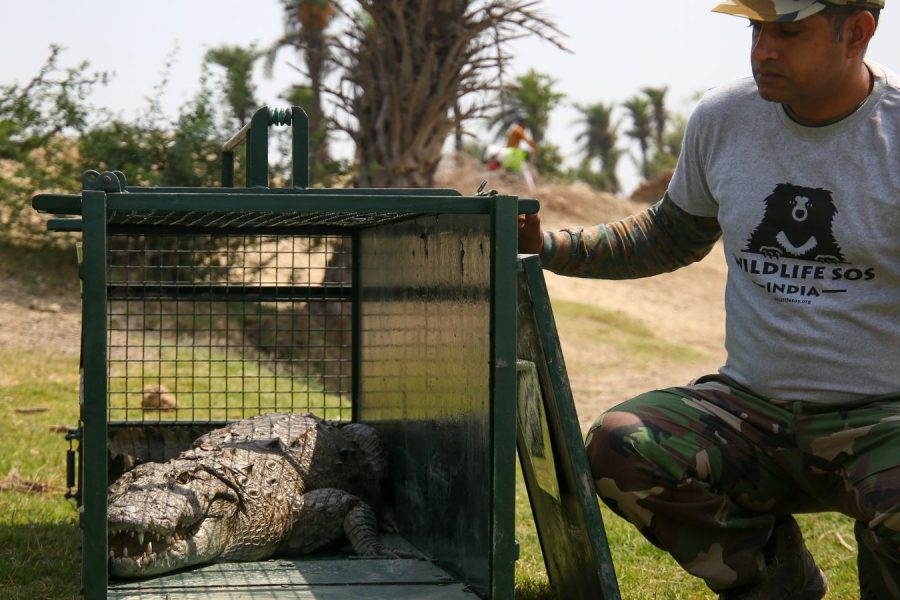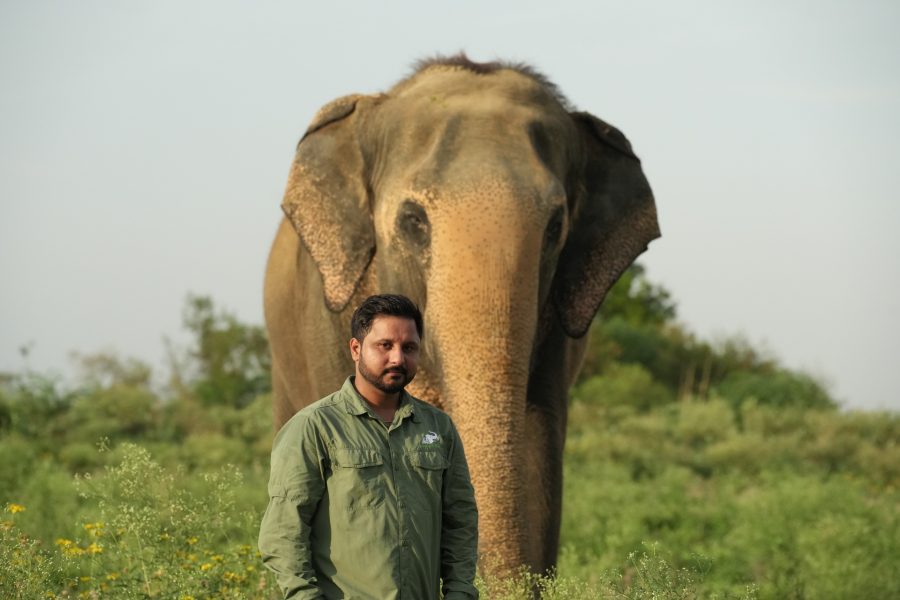Imagine rushing through a busy morning, already behind schedule, when something unusual catches your eye—a bird, barely moving, on the ground. It seems to be injured, but to be sure, you approach it cautiously. Strangely, the bird doesn’t flinch as you come closer. In that moment, you realise… the bird needs help.
What would you do?
The first step and most simple step is to immediately contact the nearest wildlife officials, or an organisation that deals with bird rescues gently. Wildlife SOS operates a 24×7 helpline to attend to calls concerning birds and other animals in distress. The team guides you through the process of safely attending to the injured bird in need, before carefully bringing the bird to the organisation’s facility for further medical aid.
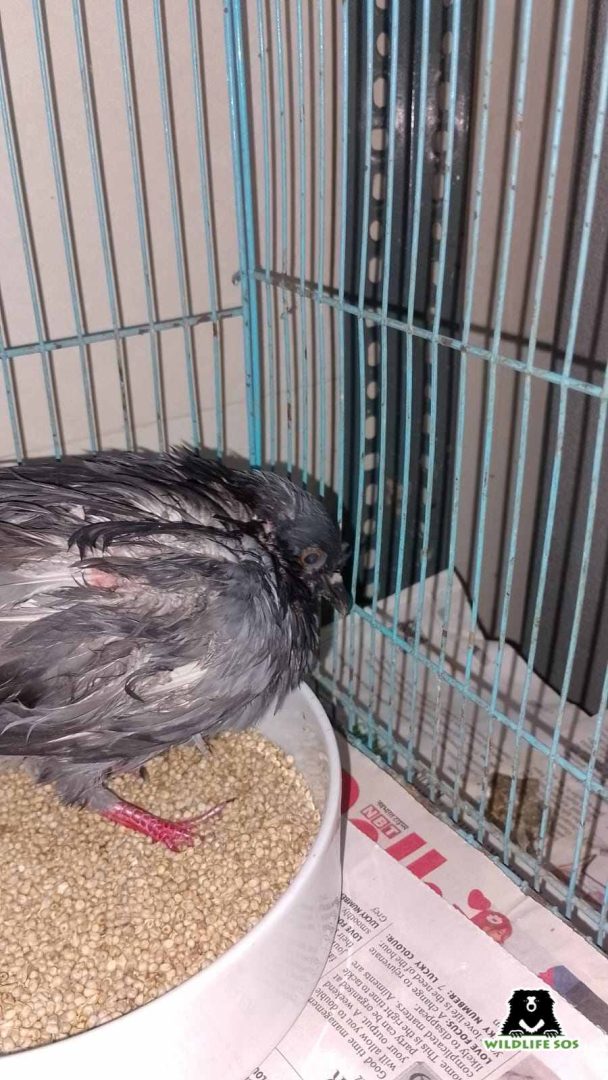
Birds in Urban Spaces: Struggles for Survival
Birds getting injured is unfortunately a frequent occurrence in urban settings, with human activities often leading to unintended harm. At Wildlife SOS, cases of birds in distress rise during festivals like Diwali and Makar Sankranti, when kite-flying is high. The glass-coated strings of the kite (manjha), barely visible to avians, often result in sharp cuts when they are in flight. Not just kites, birds also face a myriad of challenges in the concrete jungle such as collisions with buildings, entanglement in wires, and sudden bouts of dehydration in summers.
Filled with structures and devoid of greenery, towns and cities pose a constant threat to birds. The bright lights at night disorient them from their migratory route, as they tend to rely on natural lighting of the moon to navigate. Tall glass buildings have caused avians to accidentally crash into their reflective surfaces. Constant changes taking place in cities often ignore the impact this causes on avians and animals, making their survival in this environment a daily struggle.
Before moving ahead to rescue a bird spotted unusually, it’s essential to first observe the situation carefully. Not all birds found on the ground are actually in distress. Fledglings, or young birds learning to fly, often leave the nest and spend time on the ground or in low branches. This is part of their natural development. However, if a fledgling is found in a hazardous location-such as a busy street or near predators like dogs and cats-it’s important to gently relocate it to a safer area, like a nearby tree or shrub, so its parents can find it. Sometimes, fledglings are also mistaken to be injured avians, and require no attention. However, if the bird in question isn’t a baby, certain indicators can ascertain if it is injured and in need of aid:
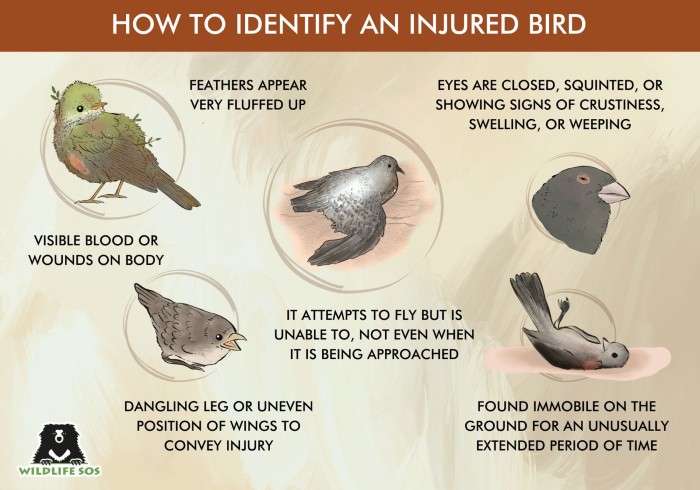
How You Can Help the Bird In Need
Having assessed the bird’s situation by paying attention to the above mentioned signs, you discover that it clearly needs medical attention. Here’s what you can do:
1. Handle the bird with care
Contacting the helpline can guide you on how to handle severely injured birdies that need urgent help. The most important advice is to try and hold the bird’s body and its folded wings together with a firm but not tight grip. This bird can then gently be transferred into a well-ventilated box, like a basket or shoebox lined with soft materials like tissues or newspaper, to keep it safe.
This box must be kept in a quiet, warm space to avoid further stress for the bird. The evident injury may be covered with a light cloth or towel. Birds can easily go into shock, so minimising contact with the rescued bird and keeping it calm is key.
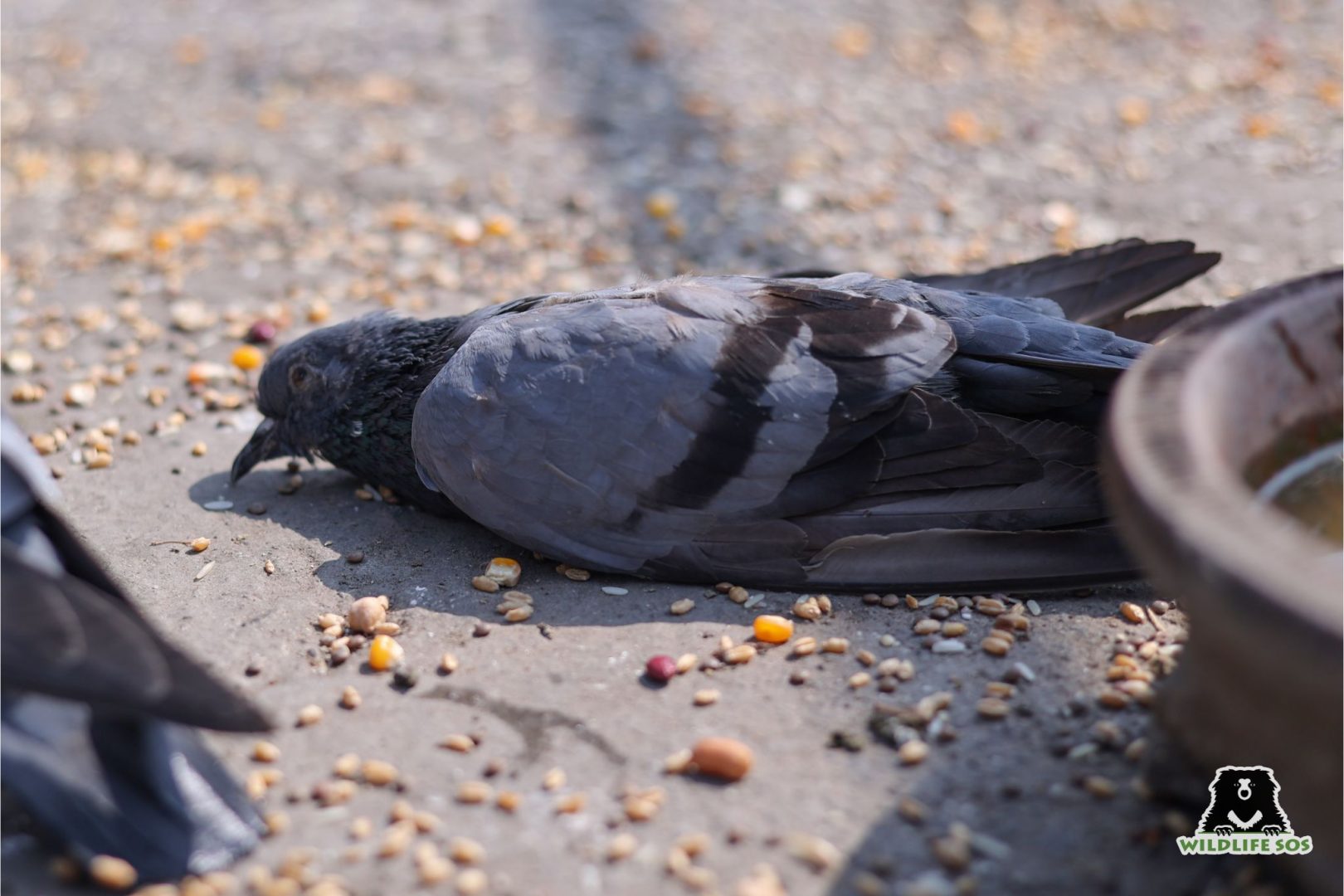
2. Avoid giving the bird food or water
Resist the urge to feed the bird or give it water, as improper feeding can cause more harm than good. It is best to wait for advice from professionals before offering any nourishment.
3. Contact nearest wildlife rescue centre
Call your local wildlife rescue centre or forest department for effective guidance. Organisations like Wildlife SOS have Rapid Response Units that are active 24×7 to offer guidance and perform rescue operations. A phone call on this hotline can result in proper guidelines you can follow till professional help is provided.
4. Transport the bird safely
If you are bringing the bird to a rescue or veterinary centre, ensure that the box is secure and the bird is calm before beginning your journey. Avoid placing the box under direct sun or air-conditioning vents during the transportation.
Careful observation, as mentioned before, is extremely important before attempting any bird rescue. Not every bird needs to be rescued, but if they do, carrying out actions in an appropriate manner can help save the bird’s life. Be well-informed about the bird species that frequent your area, so that information given to the local wildlife rescue centre over a call can result in quicker relief for the concerned bird. By following the right steps, you can save a bird in distress.

Several urban threats haunt avians, but conscious action taken by concerned citizens helps our team to save avians in danger. Urban environments becoming devoid of trees has made it challenging for birdies, especially during summers when they need respite and seek shade. In April 2024, a resident of East Delhi spotted a dehydrated barn owl under a water tank. The harsh heat impacted the bird, resulting in a rapid loss of energy. The barn owl was tended to by our rescue team that had rushed to reach the site.

In a shocking incident that took place in 2021, five juvenile kites were rescued by our team in Srinagar after they had crashed into an electric pole. This came as another reminder of how human activities can unintentionally pose a threat to avians in the locality. Timely information led to immediate medical care to the young birdies, who had suffered from wing fractures and electric shocks from the impact.
Danger to birds peaks during Makar Sankranti, a festival celebrated in January when kite-flying takes place the most. Wildlife SOS in Delhi, Uttar Pradesh and Gujarat receives multiple calls concerning birds with injuries and wing fractures, and such calls continue to pour in till the month of May. The organisation also sets up bird treatment camps in Jaipur, Rajasthan in collaboration with another charity Eco Rescuers Foundation, during this festival to provide aid to wounded avians that are brought in by concerned citizens.
Thanks to the vigilance of compassionate samaritans, urban avians like kites, crows, pigeons, peacocks, barbets, storks, mynas, doves, vultures, hornbills, shikras, bats, owls, jungle babblers, sandpipers, pond herons and parakeets are brought to our centres for the medical care they need, and are released back into the wild once they’ve fully recovered.
Whether it’s a bird injured by kite strings, is dehydrated, or a victim of an accident, Wildlife SOS’s Rapid Response Units provides professional care to ensure these avians get a second chance at life. If you find any bird or animal needing urgent medical attention, contact our teams located in the the following regions:
Delhi-NCR – +91 9871963535
Agra, Uttar Pradesh – +91 9917109666
Vadodara, Gujarat – +91 9825011117
Jammu & Kashmir – +91 7006692300, +91 9419778280

